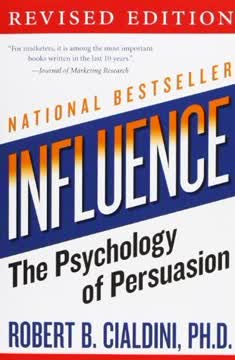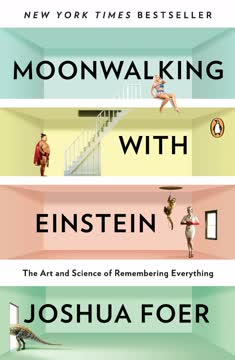つの重要なポイント
1. 記憶は「もの」ではなく「プロセス」である:その段階を理解することで学習が向上する
記憶は、見たり触れたり、重さを測ったり、X線で見たりできる「もの」(物体、器官、腺など)として存在するわけではない。
プロセスとしての記憶。 記憶は具体的な構造ではなく、複数のシステムと段階を含む抽象的なプロセスである。主な3つの段階は以下の通りである:
- 獲得/エンコーディング:材料を学ぶ
- 保持:情報を保持する
- 想起:保存された情報を呼び出す
これらの段階を理解することで、効果的な学習戦略を開発することができる。例えば、獲得段階でのエンコーディング技術に焦点を当て、保持のためにリハーサルを使用し、想起方法を練習することで、全体的な記憶パフォーマンスを大幅に向上させることができる。
短期記憶と長期記憶。 これらの2つのシステムは、容量、持続時間、機能が異なる:
- 短期記憶:容量が限られており(約7項目)、忘却率が速い
- 長期記憶:ほぼ無限の容量を持ち、比較的永久的に保存される
これらの違いを認識することで、異なる種類の情報や学習目標に合わせたアプローチを取ることができる。
2. 記憶術:記憶と想起を向上させる強力な技術
記憶術は、推論、理解、問題解決のようなタスクのために意図されたものではない。それらは学習と記憶を助けるために開発されたものである。
記憶術の技術。 記憶術は、意味や構造を持たない材料に意味や構造を与える人工的な記憶補助具である。これには以下が含まれる:
- 頭字語やアクロスティック(例:虹の色を覚えるためのROY G. BIV)
- 視覚的なイメージの連想
- 韻やパターン
- 抽象的な概念の代替単語
記憶術のシステム。 より大きな情報量に対しては、より複雑な記憶術のシステムが使用できる:
- リンクシステム:項目を連鎖的に関連付ける
- ロキシステム:項目を想像上の場所に配置する
- ペグシステム:項目を事前に覚えた「ペグ」と関連付ける
- フォネティックシステム:数字を覚えやすい単語に変換する
これらのシステムは、リスト、数字、順序情報を覚えるのに特に有用である。学習には初期の努力が必要だが、さまざまなタスクに対する記憶パフォーマンスを劇的に向上させることができる。
3. 注意と意味の重要性:効果的な記憶のための重要な要素
何かを覚えたいなら、それに注意を払い、集中し、最初にそれを確実に得る必要がある。
注意。 多くの「忘却」の事例は、注意不足による情報の適切なエンコーディングの失敗である。記憶を改善するためには:
- 覚えたい情報に積極的に焦点を当てる
- 学習中の気を散らす要素を最小限に抑える
- 自己対話の技術を使用して注意を強化する(例:「鍵をテーブルに置いている」)
意味の重要性。 意味のある情報は覚えやすい。意味を増すための戦略には以下が含まれる:
- 新しい情報を既存の知識に関連付ける
- 具体的な例やアナロジーを作成する
- 抽象的な概念をより具体的な要素に分解する
- パターンやルールを使用して情報を整理する
集中した注意と情報をより意味のあるものにする努力を組み合わせることで、情報を効果的に覚え、想起する能力を大幅に向上させることができる。
4. 組織化と連想:記憶保持を向上させるための重要な戦略
長期記憶においても、特定の情報を見つけるためにすべての記憶を検索する必要はないように、情報は組織化されている。
組織化。 情報を整理することは、保存と想起の両方に役立つ:
- 関連する項目をグループ化する
- 階層やカテゴリーを作成する
- アウトラインやマインドマップを使用する
- 連続位置効果を適用する(最初と最後の項目をよりよく覚える)
連想。 新しい情報を既存の知識に関連付けることで記憶が強化される:
- 新しい事実と既知の事実の間に精神的なつながりを作る
- アナロジーやメタファーを使用する
- 情報を個人的な経験に関連付ける
- 想起のために「それについて考える」技術を適用する
情報を整理し、連想を作成することで、想起のための複数の経路を作り、必要なときに保存された情報にアクセスしやすくする。このアプローチは、複雑な情報や大量の情報に対して特に効果的である。
5. 視覚的イメージ:記憶パフォーマンスを向上させる強力なツール
視覚的イメージは、言語的な材料の記憶を向上させることができる。
イメージの力。 視覚的イメージは非常に効果的な記憶補助具である:
- イメージは単なる言葉よりも記憶に残りやすい
- 具体的なイメージは抽象的なアイデアを表現できる
- 二重符号化(言語と視覚)が想起の可能性を高める
効果的な視覚的連想。 視覚的イメージの利点を最大限に活用するためには:
- 鮮明で詳細なメンタルピクチャーを作成する
- イメージ内の要素間の相互作用を使用する
- 動きや誇張を取り入れる
- イメージを個人的に意味のあるものにする
視覚的イメージは、語彙の習得から複雑な概念の記憶まで、さまざまな学習タスクに適用できる。特に、ロキ法やペグシステムのような記憶術システムでは、項目を鮮明なメンタルイメージと関連付けるのに役立つ。
6. 過学習と間隔反復:長期保持のための技術
過学習は、単なる習得や単なる想起のポイントを超えて学習を続けることで、学習を強化し、想起速度を向上させることが示されている。
過学習。 初期の習得後も学習を続けること:
- 記憶痕跡を強化する
- 長期保持を向上させる
- 想起速度と自信を高める
間隔反復。 学習セッションを時間をかけて分散させること:
- 集中的な練習(詰め込み学習)よりも効果的
- セッション間で記憶の統合を可能にする
- 異なる情報セット間の干渉を減らす
過学習と間隔反復を組み合わせることで、長期保持を大幅に向上させることができる。例えば、初期学習後に徐々に間隔を広げて(1日、1週間、1か月)資料を復習することで、長期間にわたる想起を劇的に改善することができる。
7. コンテキストと興味:記憶に影響を与える環境要因
場所の視覚的な知識は、関連するメッセージを覚えるのに役立つ。
コンテキスト効果。 学習が行われる環境は想起に影響を与える:
- 物理的コンテキスト:部屋、場所、背景音
- 心理的コンテキスト:気分、精神状態
- 材料コンテキスト:周囲の情報や提示形式
コンテキスト効果を活用するためには:
- 想起が行われる環境に似た環境で学習する
- コンテキスト依存性を減らすために学習コンテキストを変える
- 想起時に学習コンテキストを精神的に再現する
興味。 個人的な興味は記憶に大きな影響を与える:
- 注意と動機を高める
- 情報の深い処理を促進する
- 既存の知識とのつながりを強化する
興味のない資料の記憶を改善するためには:
- 個人的な関連性や応用を見つける
- 資料に関する質問をして好奇心を喚起する
- 情報を興味のあるトピックに関連付ける
コンテキストと興味の両方を考慮することで、学習と想起のためのより良い条件を作り出すことができる。
8. 効果的な学習戦略:SQ3R法とその他の学習技術
効果的な学習方法は、効果的な学習のための戦略に基づいているべきであり、資料の重要な部分を特定し理解するのに役立ち、重要な部分を覚えるのに役立ち、単に資料を何度も読むよりも効率的であり、学びやすいものであるべきである。
SQ3R法。 広く使用されている学習システム:
- 調査:資料の概要を把握する
- 質問:内容に関する質問を作成する
- 読む:質問に答えるために積極的に読む
- 暗唱:主要なポイントを自分の言葉で要約する
- 復習:定期的に学習を再確認し強化する
その他の効果的な学習戦略:
- 積極的な想起:定期的に自分をテストする
- 精緻化リハーサル:概念を自分の言葉で説明する
- ノート取り:情報を整理し要約する
- 他人に教える:理解と記憶を強化する
これらの戦略は、資料に対する積極的な関与を促進し、受動的な読書や機械的な暗記に比べて理解と保持を向上させる。
9. 教育における記憶術:さまざまな科目での学習を強化する
記憶術は、学生がより多くの情報を迅速に覚え、長期間保持するのに役立つ。
教育における応用。 記憶術はさまざまな科目で効果的に使用できる:
- 歴史:日付、出来事、順序を覚える
- 科学:分類法、公式、プロセスを学ぶ
- 言語:語彙の習得と文法規則
- 数学:公式や手順を覚える
学習における記憶術の利点:
- 情報の初期習得が速い
- 長期保持が向上する
- 学生の関与と動機が高まる
- 異なる学習スタイルに適用可能
記憶術は特に事実の想起に有用であるが、複雑な情報を整理するための枠組みを提供することで、より深い理解の基礎としても役立つ。
10. 名前と顔を覚える:社会的な相互作用のための実践的な技術
自意識が強い人は、特に自意識が強くない人よりも名前を覚えるのが苦手である。
名前と顔の記憶システム。 5段階のアプローチ:
- 名前を得る:正しく聞き取り理解する
- 名前に意味を持たせる:連想を作成するか代替単語を使用する
- 顔に焦点を当てる:特徴的な特徴に注目する
- 名前と顔を関連付ける:鮮明で記憶に残るリンクを作成する
- 連想を復習する:精神的に関連をリハーサルする
追加の戦略:
- 会話の中でその人の名前を使用する
- 可能であれば名前を書き留める
- 名前と顔を定期的に想起する練習をする
名前と顔の記憶を改善することで、社会的な相互作用が向上し、他人に対する真の関心を示すことができ、個人的および職業的な関係を強化する。
11. うっかり忘れを克服する:将来の記憶と過去の記憶のための戦略
うっかり忘れは、わずかな意識的な注意の投資で多くの複雑な活動を行うことができるために支払う代償である。
将来の記憶。 将来の行動を覚えておくこと:
- 外部の補助具を使用する:カレンダー、リマインダー、アラーム
- 視覚的な手がかりを作成する:物を目立つ場所に置く
- ルーチンを開発する:タスクを日常の習慣に組み込む
- 実行意図を使用する:「Xが起こったらYをする」
過去の記憶。 過去の行動や情報を覚えておくこと:
- 元の出来事に注意を払う
- 行動を行う際に鮮明なメンタルイメージを作成する
- 出来事を再構築するために「それについて考える」技術を使用する
- よく置き忘れる物のために一貫した場所を確立する
これらの戦略を実施することで、忘れっぽさを大幅に減らし、将来のタスクを覚える能力と過去の行動や情報を想起する能力を向上させることができる。
最終更新日:
FAQ
What's Your Memory: How It Works and How to Improve It about?
- Focus on Memory Improvement: The book explores the nature of memory, how it works, and practical techniques to enhance it. It combines scientific research with practical advice, making it accessible to a wide audience.
- Debunking Myths: Kenneth L. Higbee addresses common myths about memory, such as the belief that some people are simply born with good or bad memories. He emphasizes that memory can be improved through techniques and practice.
- Practical Techniques: The book provides various mnemonic systems and strategies, such as visualization and association, to help readers remember information more effectively.
Why should I read Your Memory: How It Works and How to Improve It?
- Enhance Memory Skills: The book offers practical methods to enhance your memory, which can be beneficial in both personal and professional contexts. Readers can expect to learn techniques that can be applied immediately.
- Research-Based Insights: Higbee combines his academic background in psychology with real-world applications, providing a balanced perspective on memory improvement. This makes the book credible and informative.
- Versatile Applications: The strategies can be applied to a wide range of situations, from studying for exams to remembering names at social gatherings, making it a versatile resource.
What are the key takeaways of Your Memory: How It Works and How to Improve It?
- Memory is a Process: The book emphasizes that memory is not a tangible thing but rather a complex process involving acquisition, storage, and retrieval. Understanding this can help readers manage their expectations about memory.
- Mnemonic Systems: The book introduces several mnemonic systems, including the Link, Loci, Peg, and Phonetic methods, each with unique applications for memory enhancement.
- Importance of Attention: A recurring theme is the significance of attention in memory retention; without focused attention, memory lapses are more likely to occur.
What are some effective memory techniques mentioned in Your Memory: How It Works and How to Improve It?
- Visualization: Creating vivid mental images to associate with the information you want to remember can significantly enhance recall. For example, picturing a dog sweeping with a broom can help you remember the words "dog" and "broom."
- Chunking: This technique involves grouping information into larger, manageable units to improve memory capacity. For instance, remembering a long number as smaller chunks (e.g., 376-315-374-264) makes it easier to recall.
- Association: Relating new information to something you already know can help solidify memories. For example, associating the Spanish word "pato" (duck) with the keyword "pot" can create a memorable image.
What is the Loci mnemonic system in Your Memory: How It Works and How to Improve It?
- Memory Palace Concept: The Loci system involves visualizing a familiar place (like your home) and associating items you want to remember with specific locations within that place. This method leverages spatial memory to enhance recall.
- Historical Use: This technique dates back to ancient Greece and was used by orators to remember long speeches. It is effective because it combines visualization with spatial organization.
- Practical Application: To use the Loci system, mentally walk through your chosen location and place the items you want to remember at specific points. When you need to recall the information, simply retrace your steps in your mind.
How does the Peg System function in Your Memory: How It Works and How to Improve It?
- Concrete Associations: The Peg System uses a list of pre-memorized words (pegs) that correspond to numbers, allowing you to associate new information with these pegs. This makes it easier to remember ordered information.
- Example of Application: For instance, if you want to remember a list of items, you might associate the first item with "bun" (1), the second with "shoe" (2), and so on. This creates a structured way to recall the items based on their numerical order.
- Direct Retrieval: The Peg System allows for direct retrieval of items by simply recalling the peg associated with a number, making it efficient for remembering lists and sequences.
What is the Phonetic System in Your Memory: How It Works and How to Improve It?
- Consonant Sounds for Digits: The Phonetic System assigns specific consonant sounds to each digit (0-9), allowing you to create words that represent numbers. This makes numbers more memorable by turning them into meaningful words.
- Example of Use: For example, the number 23 could be represented by the word "Noah," where "n" corresponds to 2 and "h" corresponds to 3. This transforms abstract numbers into concrete, memorable words.
- Versatile Applications: The Phonetic System can be used for various applications, including remembering phone numbers, dates, and other numerical information, making it a powerful tool for enhancing memory.
How does Your Memory: How It Works and How to Improve It address the issue of forgetting?
- Understanding Forgetting: Higbee explains that forgetting is often a result of failure at one of the three stages of memory: acquisition, storage, or retrieval. This understanding can help readers identify where they may be struggling.
- Five Explanations for Forgetting: The book discusses various theories, including decay, repression, distortion, interference, and cue dependency, to explain why we forget. Each explanation provides insight into different aspects of memory failure.
- Practical Strategies: To combat forgetting, the book suggests techniques such as spaced repetition and overlearning, which can help reinforce memory retention over time.
What is the importance of attention in memory according to Your Memory: How It Works and How to Improve It?
- Critical for Learning: Attention is essential for encoding information into memory. As Higbee states, “A man must get a thing before he can forget it,” highlighting that without attention, information may never be properly learned.
- Impact of Distractions: Divided attention can hinder memory performance, as people often fail to fully engage with the material they are trying to learn. This is particularly relevant in today’s distraction-filled environments.
- Strategies to Enhance Attention: The book suggests techniques such as minimizing distractions and actively engaging with the material to improve focus and retention.
How can I use the principles of meaningfulness and organization to improve my memory as suggested in Your Memory: How It Works and How to Improve It?
- Make Material Meaningful: The more meaningful the information is to you, the easier it will be to remember. For example, relating new concepts to personal experiences can enhance understanding and recall.
- Organize Information: Structuring information logically, such as using outlines or categories, can help facilitate memory retrieval. Organized material is easier to navigate in your mind, similar to how a well-organized file cabinet works.
- Use Familiarity and Patterns: Familiarity with the subject matter can aid memory, as can recognizing patterns within the information. For instance, grouping related items together can create a mental framework that enhances recall.
What are some common memory myths discussed in Your Memory: How It Works and How to Improve It?
- Memory is a Thing: Many people mistakenly believe that memory is a tangible object rather than a process. This myth can lead to unrealistic expectations about memory improvement.
- Photographic Memory: The idea that some individuals possess a photographic memory is largely a myth; most exceptional memory feats can be attributed to learned techniques rather than innate abilities.
- Age and Memory: The belief that older adults cannot improve their memory is also a myth. The book emphasizes that memory skills can be developed at any age with practice and the right techniques.
How does Your Memory: How It Works and How to Improve It suggest overcoming anxiety related to memory tasks?
- Relaxation Techniques: Higbee recommends using relaxation methods, such as meditation, to calm the mind and body before memory tasks. Reducing anxiety can enhance focus and improve recall.
- Preparation and Overlearning: Being well-prepared for tests or presentations can significantly reduce anxiety. Overlearning material helps build confidence, making it easier to recall under pressure.
- Practice and Feedback: Engaging in practice tests and receiving feedback can help alleviate anxiety by providing a clearer understanding of what you know and what you need to work on. This approach fosters a sense of control over the material.
レビュー
本書『記憶力:その仕組みと向上方法』は、記憶術に対する学術的アプローチで高く評価されている。読者は、科学的研究に裏付けられた包括的な記憶術のカバレッジを称賛している。多くの人が、もっと早くこの本に出会っていれば良かったと感じている。本書では、リンク法、場所法、音韻法など、さまざまな記憶システムを解説している。一部の読者は内容が難解で繰り返しが多いと感じたが、ほとんどの人はその実践的な応用に感謝している。レビューでは、技術を適用した後に情報を記憶する能力が大幅に向上したと指摘されているが、長期的な効果を得るためには継続的な練習が必要である。
Similar Books














